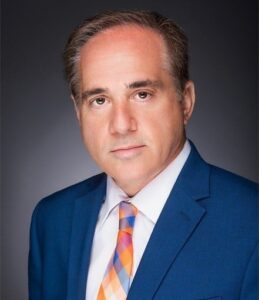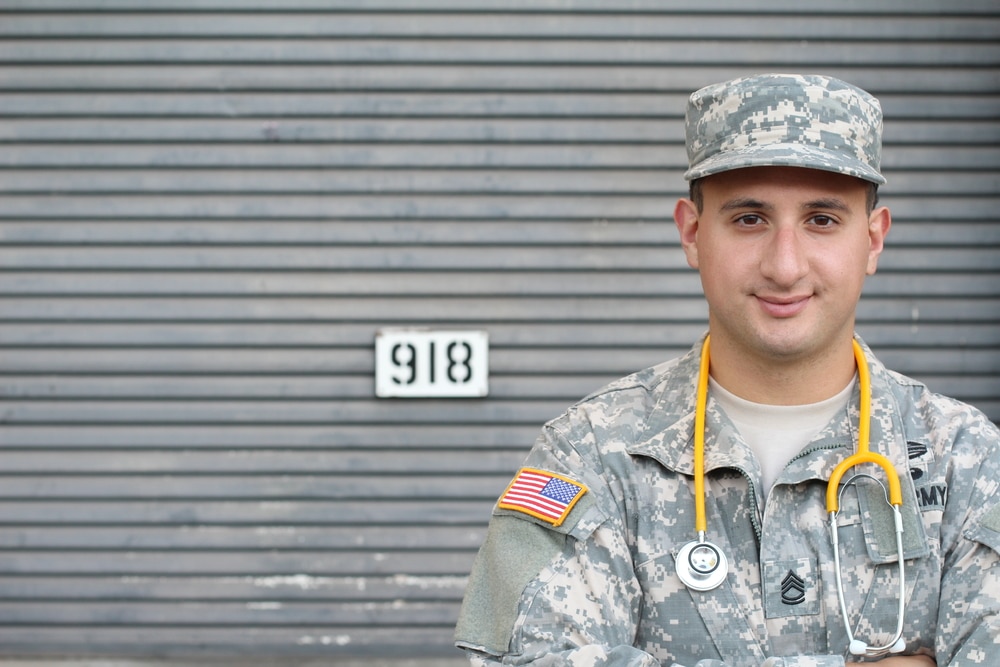In the expansive realm of healthcare, Veterans grapple with a unique set of challenges that necessitate specialized attention. These challenges often stem from many factors, including the aftermath of military service, physical and mental health issues, and the complexities of transitioning back into civilian life.
Many Veterans find themselves facing additional hurdles in accessing the care they urgently require. This impacts not only the individual Veterans but also their families and the broader community, as delayed healthcare could contribute to the worsening of existing conditions and, in some cases, escalate into crises.

Enter Dr. David Shulkin, the Ninth Secretary of the U.S. Department of Veterans Affairs, whose leadership style proved instrumental in addressing the complex problems afflicting Veterans’ healthcare. Dr. Shulkin, recognizing the urgent need for change, set a visionary goal: to achieve same-day appointments for Veterans nationwide. This audacious objective was not merely an incremental adjustment but a transformative vision that aimed to overhaul the existing healthcare system for Veterans.
As a new member of Caregility’s Board of Directors, Dr. Shulkin endeavors to leverage his expertise to advance the company’s mission of pioneering innovative methods for remote healthcare delivery.
His visionary leadership has left an indelible mark on the landscape of Veterans’ healthcare, and in this interview, we unravel the complexities and unveil the exceptional solutions he implemented.

Dr. Shulkin, can you share your approach to leadership and how you fostered a positive organizational culture during your tenure as Secretary?
In my career, I’ve found that it’s easier to create bigger change than to do change through small increments. One of the issues when leaders try to make small changes is they get frustrated at how challenging it is to change the culture.
Being able to clearly articulate where you want your organization to go, why you want to create this change, how it’s going to be accomplished, a timeline, and an accountability plan are all crucial to effect change. Make sure your organization understands all those factors, that you’re consistent in your messaging, and that you put the resources within the organization behind that change initiative. As Secretary, I ensured our initiatives were Veteran-centric and tapped into the strong commitment to mission within the workforce to foster positive culture and change.
What strategies did you employ to improve the efficiency and effectiveness of the U.S. Department of Veterans Affairs?
When I entered the Department of Veterans Affairs, we had a situation where Veterans were waiting long periods of time for appointments. The clarity I brought was making it our priority to get those wait times down. I was clear that we’d set same-day appointments before the end of that year and the specific ways we’d do that were listed; using telehealth technology was one way, and allowing VA professionals to go across state lines was also part of that. We also gave advanced practice nurses independent practice authority, creating additional staffing opportunities to do that.
Efforts to make everyone accountable for that goal included actually publishing wait times publicly. Everyone could see what our goals were and whether we were achieving them. By the end of 2016, we had same-day appointments across the entire country at every VA facility. I believe we were able to accomplish that great change because there was clarity around what our objective was.
How did you navigate budgetary challenges and allocate resources to ensure Veterans received the necessary care and support?
The easiest answer when things are not performing the way anyone wants is, “Well, we don’t have enough money,” and I don’t think that is usually the answer. There are times that is true, but in my experience with the VA that was not the case. Congress would always allocate the money we needed to care for Veterans. The harder part is designing systems meant to get the results you want that are optimally performing, like finding ways to get your workforce to operate at their highest level of training or licensure and letting others field lower-level tasks or using technology to increase labor productivity but decrease the time to perform tasks to look for new, more cost-efficient ways to practice. That’s hard to do but it ultimately saves money if implemented well.
As a new member of Caregility’s Board of Directors, what specific goals do you have in mind for the company’s role in pioneering innovative methods to deliver healthcare remotely?
Healthcare has been one of the few industries in our economy that has not seen labor productivity improvements over the past decade. Instead, we continue to struggle with labor shortages and increasing costs. For a health system to get real value from technology it must be versatile and integrate into the current workflow. Caregility seeks to be the enterprise solution for health systems that seek to use technology to improve efficiency and outcomes.
Looking ahead, what emerging trends or technologies do you foresee playing a significant role in shaping the future of telehealth, and how can Caregility position itself to stay at the forefront of these developments?
Future strides in telehealth are going to be dependent upon the ability to integrate data sources, personalize care options, integrate care delivery among various disciplines, and use artificial intelligence and large language models to extract information from clinical and administrative data to better inform diagnosis and treatment options for patients.
Homelessness among Veterans is a persistent issue. What strategies did you employ to address and reduce homelessness within the veteran population?
We awarded grants to groups that operated in the communities. We also worked closely with HUD to expand the use of HUD-VASH vouchers for housing, including expanding benefits to Veterans beyond those who were honorably discharged.
How did you ensure and measure the quality of healthcare provided to Veterans within the VA system?
We measured quality using and comparing quality metrics in the private sector. We then published all our quality measures. When you look at the VA’s publicly reported outcomes compared to the private sector, the VA overall outperforms the private sector. This surprises many people. It demonstrates that an integrated system of care that can follow patients longitudinally and has a system based largely in primary care with strong integration with behavioral health does have better outcomes.
That doesn’t mean the VA is best at everything. At the system level, it’s superior because private organizations often experience gaps in care. Care should still be an individual choice though. Sometimes you can get the best care for you within the community you live in. Or perhaps you need a heart transplant, and the best provider is a non-VA facility. You may need a treatment that the private hospital does better than the VA. You want to have a system of care that is transparent enough that you can actually look and see, “Is that the best care for me? Is it VA or a private system?” We need to be educated enough as consumers to make that call.
During your tenure, the VA faced various challenges. Can you discuss a specific crisis or challenging situation and how you managed it effectively?
The wait time crisis was our biggest challenge at the VA. We ultimately achieved same-day appointments for all urgent Veteran healthcare.
There is a lot to be learned from the VA in terms of the integrated system of care, chronic care management, behavioral health integration, incorporating the social determinants of health into care planning, and decreasing access barriers like high copays and deductibles.
Transparency is good for healthcare and it’s good for patients. If we can provide that information in an accurate way, we can improve the whole health system. That was my goal at the VA. Wherever you can shine light on issues, people will make better decisions.
Rural Veterans often face unique challenges in accessing healthcare. What initiatives did you undertake to address healthcare disparities in rural areas?
We had an office of rural health that addressed issues with home-based care, remote monitoring, and telehealth.
Women Veterans have distinct healthcare needs. What steps were taken to ensure that the VA adequately addressed the healthcare and support requirements of women veterans?
We created women’s health clinics in each of our medical centers and initiated new programs and policies and increased funding.
Given the advancements in technology, how did you integrate telehealth services to improve accessibility for Veterans, especially those in remote or underserved areas?
Tech needs to be a big part of a solution in accessing care where you don’t have physical facilities or the workforce distribution. There are other ways of addressing the access issue besides pure tech, but I primarily think that should be the essence of the solution – get people to care wherever the expertise exists.
Other solutions include things like working with educational programs to do workforce training and to promote greater patient and family caregiver training to help people understand how they can be part of improving health in their communities, implementing preventative strategies, using tools like AI to help people get information on when they should access specialty care versus primary care versus urgent care, and the expansion of telehealth and remote monitoring care in the patient home and community. People want care where it’s most convenient for them. To me, that means either care on your phone where it’s mobile or care in your home.
Looking back on your tenure, what do you consider to be your most significant accomplishments, and what lessons did you learn that could benefit future leaders of the Department of Veterans Affairs [or health systems in general]?
Creating a system of integrated VA and community-based care that served the Veteran is what I perceive to be our most significant accomplishment.
My advice for others is that incremental change is overrated. Sometimes big goals, while risky, are the way to achieve great things. It’s important for every organization to ask, “What’s a goal that would make a big difference that would be wise for us to pursue?”
Healthcare organizations have the responsibility to answer that question for their specific communities. Healthcare is geographic. Look at what clinical priorities there are for different patient populations in your community. Certain populations have a higher incidence of diabetes, for example. Look at not only the problems but how you’re trying to solve them. Be more proactive in outreach to solve problems.
Many healthcare organizations still have a model where they wait until a patient has a problem and then schedule an appointment to bring them in. Organizations need to think about how we can reach out to people in the community to intervene and manage conditions better or prevent them from having to come to the hospital.
In the Department of Veterans Affairs, when I became aware of drugs that can cure Hepatitis C, we looked at how many Veterans had Hepatitis. There were 176,000 patients documented in our database. We reached out to all of them to bring them in for the treatments that can cure that disease. By doing so, we were able to get it to less than 10,000 untreated Veterans. That proactive outreach model of intervention is extremely powerful.
Read the Impaakt article where this interview was originally published here.







